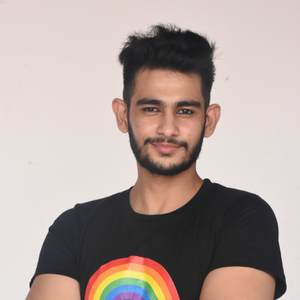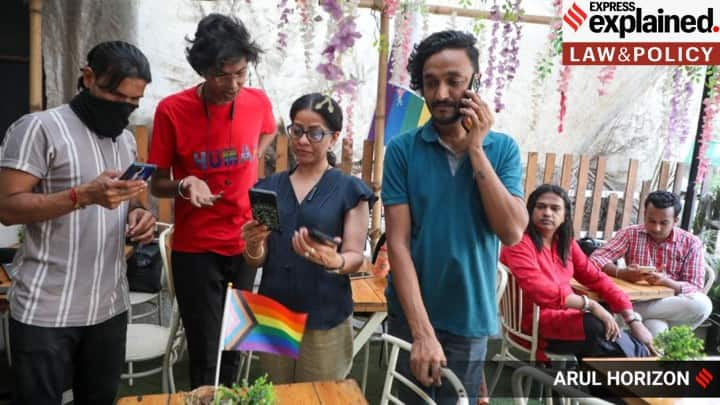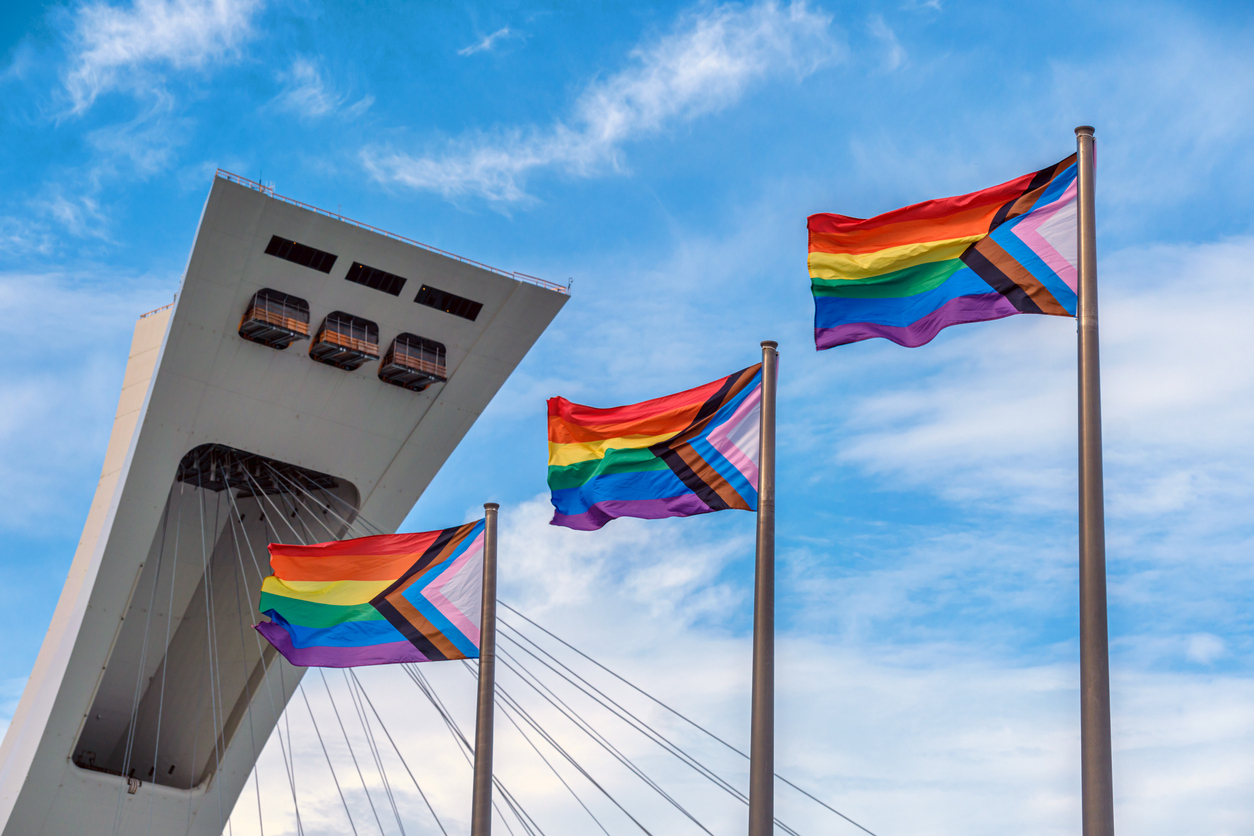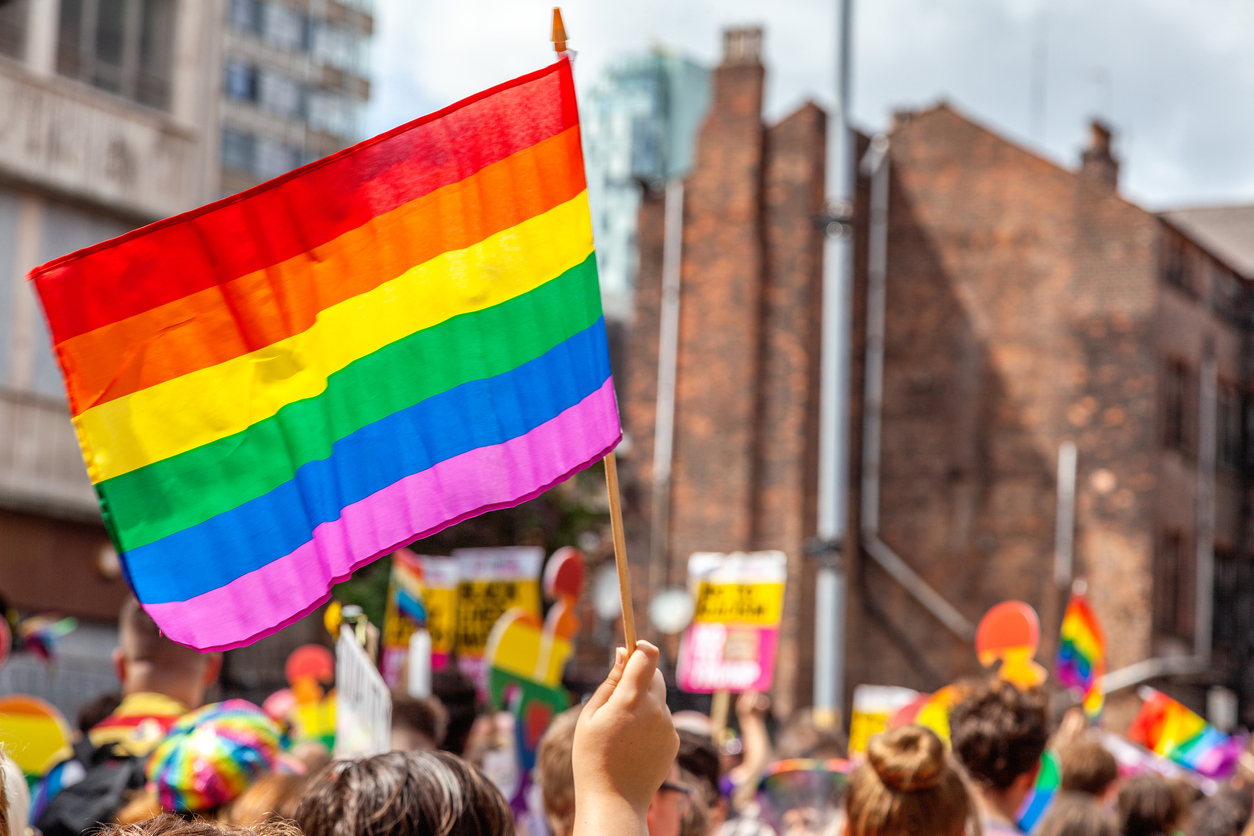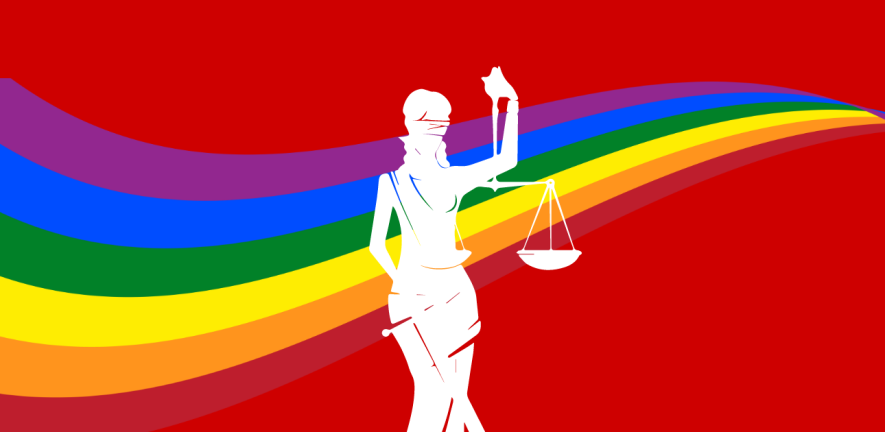
Queer-Feminist Reflections on the Marriage Equality Case in India: Navigating Challenges for Equality and Inclusion
Exploring the Stakes: Understanding the Marriage Equality Case before the Supreme Court of India
As the Supreme Court of India reserves its judgment in the marriage equality case, it is crucial to understand the issues at stake. The hearings witnessed impassioned arguments from both sides presenting their case to the Bench.
The LGBTQ+ petitioners clarified that they sought a constitutionally compliant interpretation of marriage within existing secular laws, such as the Special Marriage Act of 1954. This interpretation was intended to not only grant them the right to marry but also ensure a comprehensive set of rights associated with marriage, which essentially encompassed the same rights as those enjoyed by heterosexual couples.
On the other hand, the respondents, representing the government of India and some civil society organizations, opposed marriage equality on two main grounds. Firstly, they argued that the state had a legitimate interest in limiting marriage to a union between a “biological man and a biological woman.” They claimed that recognizing LGBTQ+ marriages would require extensive changes to numerous laws, including personal law, which governs matters such as adoption, inheritance, and maintenance, all of which they argue was originally drafted with the understanding that marriage is a union solely between cisgender heterosexual individuals. Secondly, they contended that the issue of marriage equality should be debated in parliament rather than the courts, given the social nature of marriage and its inclusion in the concurrent list of the Indian Constitution.
Challenges and Dilemmas: Queer-Feminist Perspectives on Marriage Equality
Some scholars of Indian queer theory, such as Ashley Tellis question the privileging of the law in the battle for equal rights. Writing for the Jindal Global Law Review in 2012, Tellis argues that it is both ironic and hypocritical for a community, premised on non-normativity, to seek recognition from an institution that entrenches people and communities in conventional, normative boxes. An example of this complexity can be seen in the National Legal Services Authority v. Union of India judgment and the creation/recognition of the ambiguous “third gender” category. During the marriage equality hearings, the Solicitor General argued that the “third gender” category encompassed the entire LGBTQ+ spectrum, contrary to the NALSA judgment’s original intent- thereby vindicating Tellis’ point of questioning the law as a focal point of queer advocacy.
Additionally, American philosopher Ann Ferguson raises an important dilemma from a feminist perspective on gay marriage. While her arguments are centered on the American queer experience, they strongly resonate with the Indian context, especially considering the resistance to marriage equality based on concerns about its purported negative impact on the “Indian social fabric“.
Ferguson argues that the American national identity is constructed upon a combination of the heterosexual family unit and the concept of individualism. This creates a clash of values when it comes to gay marriage, as the United States prides itself on principles of individual freedom, civil rights, and pluralism, advocating for the rights of all adults, including minority groups. However, the United States’ identity is also intrinsically tied to the heterosexual family unit. One common argument for gay marriage is that denying it deprives LGBTQ+ individuals of social recognition, familial rights, and full citizenship. Furthermore, the separation of church and state, as outlined in the US Constitution’s Bill of Rights, upholds individualism and freedom of religion, while also preventing religious conflicts that could impede individual rights and liberties. Arguing against gay marriage solely based on a Biblical interpretation of marriage as a union between one biological man and one biological woman would be an unreasonable stance to deny equal rights to gay people. Yet, this very unreasonableness challenges the core of American society—the notion of the heterosexual family unit.
Another dilemma arises from a feminist perspective on gay marriage. Traditional marriage has been criticized by feminists as being an oppressive institutional system that perpetuates male dominance. However, feminists also support reproductive choice and sexual freedom, which gay marriage can be seen as promoting. Thus, by supporting gay marriage, feminists may seem to endorse an institution (marriage) that they are simultaneously skeptical of due to women’s ongoing inequality within it.
Reconciling Rights and Social Norms: Navigating the Indian Context
Many of the dilemmas highlighted above are relevant to the Indian context. Although the Indian Constitution does not have a specific Bill of Rights, Part III includes Fundamental Rights, and it has been argued by Indian petitioners that the denial of marriage rights to LGBTQ+ individuals infringes upon these rights. It is important to note that while the American courts focused primarily on the issue of marriage for gays and lesbians, the case before the Supreme Court of India encompasses all identities within the spectrum, including transgender people.
Furthermore, secularism is explicitly mentioned in the Indian preamble. It is considered a part of the “Basic Structure” of the Constitution as laid out in Kesavananda Bharati Sripadagalvaru & Ors. v. State of Kerala & Anr. (1973). This ensures that opposition to marriage equality based on religious grounds holds no merit under India’s secular marriage laws, which is anyway the central focus of the case. Regarding individualism, it is worth mentioning that psychiatrists Rakesh K. Chadda and Koushik Sinha Deb have explored the role of the Indian family system and collectivistic culture in the context of psychotherapy. They have highlighted that Indian society is collectivistic in nature and emphasizes social cohesion and interdependence. The traditional Indian joint family system also follows these principles of collectivism. This stands in stark contrast to Western notions of individualism. Due to this distinction, the respondents in the case expressed their desire to address the issue through engagement with the people, state governments, and the Parliament, rather than relying solely on the courts. After all, the framework of Fundamental Rights in India is rooted in individualistic principles rather than collectivist ones, and marriage, the respondents contend, is a social institution with public ramifications.
Embracing Complexities and Exploring Solutions: A Queer-Feminist Perspective on Marriage Equality
In “Undoing Gender” (2004), Judith Butler highlights the unintended consequences of promoting lesbian and gay marriage, as it tends to reinforce a new norm that excludes non-conforming sexual arrangements like consensual non-monogamy and “open marriages.” Interestingly, during the marriage equality hearings, the Solicitor General raised similar concerns about incest and polygamy, suggesting that legalizing same-sex marriage could potentially open the doors to the acceptance of prohibited forms of relationships. Therefore, queer-feminist theorists opposing marriage must articulate their stance cautiously, without replicating homophobic objections to same-sex marriage.
Therefore, Butler argues for disentangling the rights and obligations currently associated with marriage, allowing it to remain a symbolic choice while enabling a diverse range of kinship formations outside of it as well. In “At the Heart of Freedom: Feminism, Sex, and Equality“ (1998), American Philosopher Drucilla Cornell takes the discourse further by asserting that promoting the purported “sanctity” of heterosexual monogamous marriage in a liberal society is unjustifiable, as it violates an individual’s “personality” and privacy- concepts coincidentally upheld by the Supreme Court of India in Justice K. S. Puttaswamy & Anr. vs. Union Of India & Ors (2017) and Navtej Singh Johar v. Union of India (2018). The respondents, however, argue that marriage is a matter of public concern. To such claims, Cornell further contends that if gays and lesbians are denied the right to parent or face significant obstacles in forming families, the state encroaches upon their privacy rights. Thus, while marriage may have public implications as the respondents contend, the relationship itself remains a private matter between two individuals and their families- and this is a right that the Supreme Court of India has upheld as fundamental. It would, therefore, be a departure from precedent for the Court to rule against marriage equality on the purported “publicness” of marriage.
Ferguson further highlights the contradiction in US cases like Griswold v. Connecticut (1965), where the US Supreme Court recognized the right of married couples to use birth control but still upheld the state’s interest in protecting the monogamous heterosexual family for reproductive reasons, implying that individual rights are allowed as long as they conform to the heterosexual nuclear family model, surveilled by the state. In India too, judicial precedent makes it impossible to reconcile an individual’s choice to make private and intimate decisions about their body with the state’s emphasis on regulating and controlling the traditional heterosexual family structure.
A slew of Supreme Court decisions on abortion such as Suchita Srivastava vs. Chandigarh Administration (2009)– in which the Supreme Court affirmed a woman’s decision not to have an abortion and X vs Principal Secretary, Health and Family Welfare Department, Govt of NCT Of Delhi (2022) – in which the Court upheld the woman’s choice to have an abortion- nullifies the procreation argument made by the respondents. The central tenant of these decisions is that “reproductive choices is also a dimension of ‘personal liberty’ as understood under Article 21 of the Constitution of India” (as quoted in Suchita Srivastava). Ferguson agrees with Cornell’s perspective, asserting that the U.S. political landscape should be interpreted in a pluralistic manner, granting individuals the right to express their identities as they see fit, including individuals who identify as queer, gay, lesbian, transgender, or intersex. There is no reason why India, also a pluralistic, secular, democratic republic, cannot adopt a similar approach.
While the current fight for marriage equality is limited to LGBTQ+ individuals seeking such unions, Ferguson supports Butler’s call to expand rights and entitlements to those who don’t fit within the confines of a “conventional marriage,” regardless of their sexual orientation or gender identity. Ferguson emphasizes the importance of queers, gays, lesbians, and their allies forming alliances with others to advocate for the expansion of welfare state entitlements, ensuring inclusivity for all, irrespective of marital status, employment, or wealth.
This broader political endeavor should involve collaborations with heterosexual individuals as well, aiming to support diverse chosen forms of kinship and challenge authoritarian traditional family models, in order to establish a more inclusive familial framework. It is important to acknowledge that non-traditional or “atypical” families come in various forms and include people of all sexualities and genders, extending beyond the LGBTQ+ community. The Supreme Court of India, in the case of Deepika Singh v. Central Administrative Tribunal (2022), highlighted that all these individuals “are equally deserving not only of protection under law but also of the benefits available under social welfare legislation.” The ethos and spirit of this judgment must be remembered by the Bench as it deliberates on the marriage equality case.
By coming together, feminists and queer theorists, regardless of their stance on marriage, can work towards ensuring that individuals are afforded equal rights and opportunities to form diverse, consensual relationships and families, challenging societal norms and fostering a more inclusive and democratic society that values and respects the autonomy and choices of all individuals.
